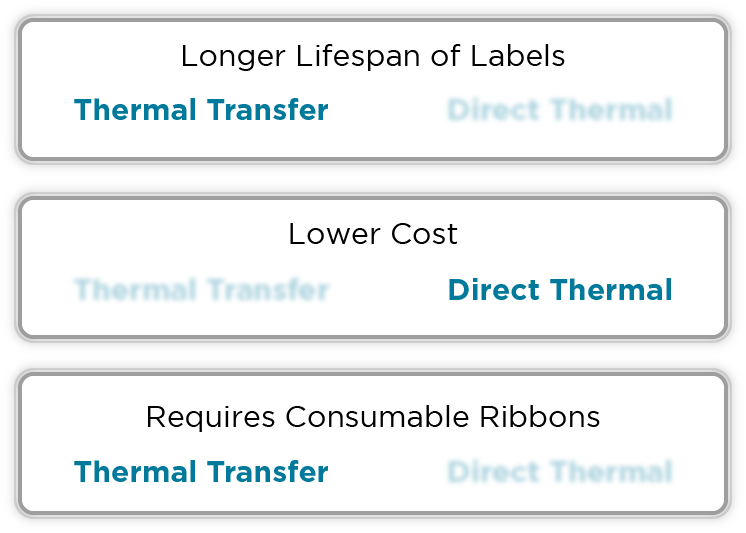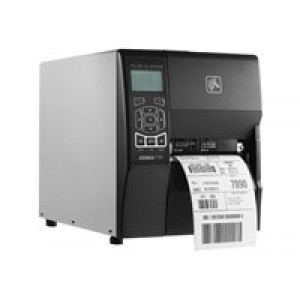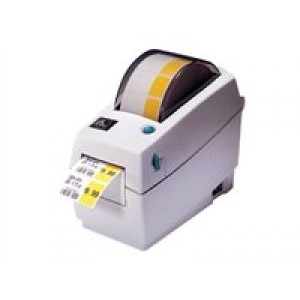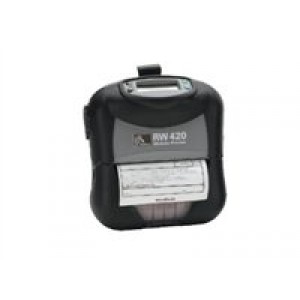I recently published a blog detailing how to select the right barcode label for your application, which you can read here. In this blog, I would like to help guide you in selecting the right Label Printer. I hope this will clear away some of the confusion regarding their features, usability, and durability.
Features
- Direct Thermal vs. Thermal Transfer
I discussed this briefly in my last blog as well, but Direct Thermal (DT) and Thermal Transfer (TT) are the two most popular methods of printing out labels.

DT printing involves heating up a special type of media called Thermal Paper, which then changes color to produce an image. Direct Thermal printers produce images that are more susceptible to fading due to light, heat, and other environmental factors.
Thermal Transfer printers use consumable ribbons that transfer to the media after heat is applied. They produce images that last longer and are more resilient to environmental factors.
Many label printers have the option of switching between DT & TT for maximum versatility. Keep in mind, though, that while labels printed with Thermal Transfer do tend to be more durable, they rely on consumable ribbons, meaning there is a greater upkeep cost associated with printing.
- RFID
RFID (Radio Frequency Identification) is a process by which items are identified automatically when they pass by an RFID Antenna. By eliminating the need to locate and scan a barcode, RFID technology allows for enhanced efficiency in the asset management, inventory tracking, and logistics industries. Specialized high-end label printers provide the ability to encode RFID tags, which are found embedded in smart labels. These printers are also capable of printing precise barcode labels, providing a complete traceability package. To read more about the benefits of RFID, check out this blog on RFID applications.
Compatibility & Lifespan
- Form Factor
Label Printers come in 3 form factors:
- Industrial Printers
 are the metallic behemoths of the printer world, and are most commonly found in manufacturing, distribution, and warehousing environments. They are rigorously tested to ensure that they will remain functional even after years of high volume printing.
are the metallic behemoths of the printer world, and are most commonly found in manufacturing, distribution, and warehousing environments. They are rigorously tested to ensure that they will remain functional even after years of high volume printing.
- Desktop Printers are space-efficient and suitable for lower volumes of label printing; they are an essential tool in hospitals, stock rooms, auto shops, and any place that needs to set up a label printing solution quickly and easily. While they do not have the same secure metal casing as Industrial Printers, our Desktop Printers are extremely reliable and use as few moving parts as
 possible to ensure a long-lasting solution.
possible to ensure a long-lasting solution. - Mobile Printers are designed on-the-go label printing wherever there is a need. They are often kept in company-owned vehicles to give employees in the field an extra edge so that they can react faster while going on deliveries, demonstrating products, or going out on a contract.
- Connectivity
Most Industrial & Desktop Label Printers are accessed via the company’s internal network. This is usually achieved through a standard Ethernet cable connection, but some models are now available with wireless capabilities to speed up the installation process and allow for easier access (no worries about running any cables).
Mobile Printers work a little differently. Most Mobile Printers use Bluetooth to connect to any smartphone or mobile computer. The user then connects to the company’s network, and using a mobile printing solution, he or she sends the data to the Mobile Printer where it is instantly received and the document is printed.
If you liked the information found in this blog, you may also be interested in last week’s blog, entitled, 6 Things You Need to Know About Barcode Labels. Next up, I will be back to discuss the inner workings of barcode scanners and software databases, so be sure to look out for those!
Still have unanswered questions about Label Printers? Contact us today!
Call 800-830-9523 or Email info@L-Tron.com
About the Author:
 Cal Goheen is on the marketing team here at L-Tron, specializing in unique content creation and organic search visibility. When he’s not busy writing out informative blog posts, you can find him absorbed in his studies at the University of Rochester.
Cal Goheen is on the marketing team here at L-Tron, specializing in unique content creation and organic search visibility. When he’s not busy writing out informative blog posts, you can find him absorbed in his studies at the University of Rochester.













